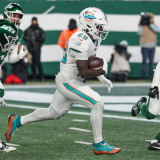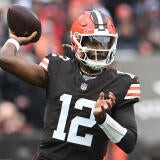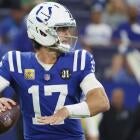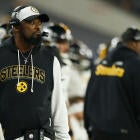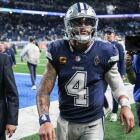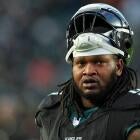Agent's Take: Rams, Packers among NFL teams with largest dead money salary cap charges in 2023
Green Bay is free of Aaron Rodgers' huge cap hit in 2024
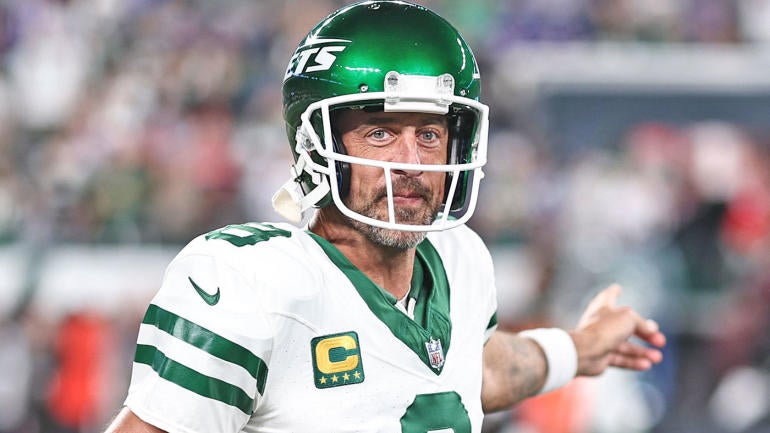
Individual dead money amounts were covered a couple of weeks ago. The focus now turns to the NFL teams with the most dead money.
Dead money is a salary cap charge for a player who is no longer on a team's roster. An inordinate amount of dead money can put a team at a competitive disadvantage. The salary cap room needed to be active in free agency or give contract extensions to important players on the team shrinks. Although the NFL sets the salary cap annually, each team's adjusted salary cap varies because unused salary cap room can be carried over from one year to the next. The carryover ability can help offset the effects of excessive dead money.
Dead money exists because of how salary cap accounting rules operate. Signing bonuses, option bonuses and certain roster bonuses are prorated or spread out evenly over the life of a contract for a maximum of five years. When a player is released, traded or retires, the remaining proration of these salary components immediately accelerate onto his team's current salary cap.
There are two major exceptions to this general rule of bonus proration accelerating. Only the current year's proration counts toward the cap with players released, traded or retiring after June 1. The bonus proration in future contract years is delayed until the following league year, which typically begins in early to mid-March.
A team can also release two players each league year prior to June 2 (known as a post-June 1 designation) that will be treated under the cap as if released after June 1. With a post-June 1 designation, a team is required to carry the player's full cap number until June 2 even though he is no longer a part of the roster. The player's salary comes off the books at that time unless it is guaranteed.
This means dead money is typically a sunk cost where money isn't owed to a player. A payment is associated with dead money when there are salary guarantees at the time of release or departure comes after the player has already begun receiving a portion of his compensation in that particular league year.
Four NFL teams (Rams, Buccaneers, Packers and Cardinals) lead the way with more than $65 million in dead money. Here's a look at how these teams accumulated their dead money. For players in the top 10 with dead money, their respective ranking is noted.
Potential dead money subject to a grievance is not included in the calculations. Neither are potential expenses from termination pay since a player must submit paperwork during a small time frame right after the regular season ends in order to collect. The NFL Collective Bargaining Agreement's $295 daily amount for participating in a team's voluntary offseason workout program is also included in dead money when applicable.
Los Angeles Rams
- Dead money: $78.64 million
- Adjusted salary cap: $224,868,312
- Dead money percentage: 34.97%
Biggest charges
- Allen Robinson (WR): $21.45 million (5th)
- Jalen Ramsey (CB): $19.6 million (8th)
- Leonard Floyd (Edge): $19 million (9th)
Going from Super Bowl champions to missing the playoffs last season with a 5-12 record led to the Rams changing course as the "Eff Them Picks" approach to roster building started catching up with them. The Rams were supposed to be punting on the 2023 season and looking to 2024 by cleaning up the salary cap for the future after stripping down the defense. Surprisingly, the Rams are in contention for an NFC wild card playoff berth with a 6-6 record.
Ramsey was dealt to the Dolphins in March for a 2023 third-round pick and tight end Hunter Long. The Rams created $5.6 million of cap space with the trade. The three-time First Team All-Pro had three years left on the five-year, $100 million contract extension, containing a $25 million signing bonus, he signed in 2020 to become the NFL's first $20 million-per-year defensive back.
Floyd was released in March as one of several cost-saving maneuvers to help the Rams get under the salary cap. There were two years remaining for $31.5 million of the four-year, $64 million contract he signed in 2021, which had a $14 million signing bonus. The Rams gained $3 million of cap space by parting ways with Floyd.
There was a mutual parting of the ways with linebacker Bobby Wagner, who was a 2022 Second Team All-Pro by the Associated Press, after just one season in Los Angeles. The 33-year-old came to the Rams because he thought he would be on a perennial contending team. He wasn't interested in going through what he thought would be a rebuilding process during the latter stages of a Hall of Fame career. The Rams picked up $5 million of cap room with Wagner's departure. Wagner made $10.5 million for his brief stint with the Rams.
The Rams were so motivated to get rid of Robinson after a disappointing debut season in Los Angeles that $3.4 million of 2023 cap space was lost in his April trade to the Steelers, which was a swap of 2023 seventh-round picks. Robinson had signed a three-year, $46.5 million contract (worth up to $48 million through incentives) with $30.75 million fully guaranteed in 2022 free agency. A willingness by the Rams to eat $10.25 million of Robinson's $15.25 million 2023 salary made the trade possible. Robinson made $25.75 million from his short stay with the Rams, which was limited to 10 games because of a foot injury.
Tampa Bay Buccaneers
- Dead money: $67.25 million
- Adjusted salary cap: $227,432,813
- Dead money percentage: 29.57%
Biggest charges
- Tom Brady (QB): $35.104 million (2nd)
- Donovan Smith (OT): $7.95 million
- Leonard Fournette (RB): $5 million
Note: The $6.855 million and $2.4 million salary cap charges from LB Lavonte David and DL William Gholston's contracts voiding are not included as dead money because they subsequently re-signed with the Buccaneers.
The bill has come due for the Buccaneers radically changing their approach of salary cap management in 2021 to "keep the band together" to try to repeat as Super Bowl champions because of Brady retiring in March. Win-now mode personnel moves were constantly made with little regard to long-range planning.
Deviating from a "pay as you go" contract structure utilized with practically all veteran signings ever since Mark Dominik's tenure as general manager, which ran from 2009 through 2013, became the norm for the Buccaneers. A player's cash and salary cap numbers are the same in each contract year with the "pay as you go" structure because there isn't a signing bonus that's prorated over the life of the contract (for a maximum of five years).
Salary guarantees are given instead under the "pay as you go" model. Deals with this structure have higher cap numbers initially because of the absence of a signing bonus. The first contract year usually consists of a fully guaranteed base salary and a roster bonus due a few days after signing. The second year in the most lucrative "pay as you go" contracts has a fully guaranteed base and roster bonus due during the first couple of days of the league year that becomes fully guaranteed within a few days of initially signing. There may also be conditional guarantees in the third contract year.
A big benefit to "pay as you go" contracts is there aren't any residual salary cap charges or dead money when a player is released during the latter years of the deal once the guarantees have expired provided the contract hasn't been restructured to create cap room by converting salary into signing bonus.
Brady's contracts are a prime example of the shift in philosophy. The fully guaranteed, two-year, $50 million deal worth a maximum of $59 million with incentives Brady signed as an unrestricted free agent in 2020 to join the Buccaneers was extended by one year the following March. The one-year contract extension worth nearly $28 million freed up $19.3 million of 2021 salary cap room. Three voiding/dummy contract years (2023 through 2025) were added so Brady's fully guaranteed $20 million fifth day of the 2021 league year roster bonus and $20 million signing bonus could be prorated over five years (through 2025) instead of over just two years (through 2022). Both of these salary components were each prorated on the salary cap at $4 million annually for these five years.
After Brady decided to play a 23rd and final season in 2022, his contract was reworked again. Instead of making $10,395,588 in 2022 on a $20,270,588 cap number, his compensation was raised to $15 million by essentially buying out the $4.5 million of incentives in his contract.
In addition, $13.88 million was converted to a roster bonus due one day after executing the new contract that would be prorated over the life of the contract like signing bonus, while a dummy/voiding 2026 contract year was added. The new dummy/voiding year allowed the roster bonus to be prorated on the salary cap at $2.776 million annually from 2022 through 2026. Brady's 2022 cap number dropped to $11.896 million in the process.
Brady's $35.104 million is the third largest dead money charge ever. His dead money consists of $12 million in 2021 roster bonus proration (2023 through 2025), $12 million in signing bonus proration (2023 through 2025) and $11.104 million in 2022 roster bonus proration (2023 through 2026).
Green Bay Packers
- Dead money: $65.319 million
- Adjusted salary cap: $226,782,720
- Dead money percentage: 28.8%
Biggest charges
- Aaron Rodgers (QB): $40,313,570 (1st)
- Adrian Amos (S): $7.95 million
The Packers accommodated Rodgers' trade request a little over a year after he became the NFL's first $50 million-per-year player. Quite frankly, the Packers were ready to turn the quarterback reins over to 2020 first-round pick Jordan Love. The four-time NFL MVP's 18-year tenure with the Packers came to an end when the Jets sent the Packers a 2023 first-round pick (13th overall), a 2023 second-round pick (42nd overall), a 2023 sixth-round pick and a conditional 2024 second-round pick in exchange for him and a 2023 first-round pick (15th overall pick) in April a couple of days before the start of the 2023 NFL Draft.
Rodgers signed a contract that was widely considered to be $150.815 million over three years in 2022 although two additional below-market years (2025 and 2026) were included. Because of a complex double-option contract structure, the cap ramifications were going to get a lot worse for Green Bay when the divorce occurred, whether by a trade or retirement, if Rodgers had remained with the Packers. For instance, the Packers would have been contending with $68.205 million of dead money in 2024 with a Rodgers departure after returning for a 19th season in Green Bay, where $43.725 million of this $68.205 million would have been bonus proration attributed to Rodgers' 2024 through 2026 contract years from the $58.3 million option bonus payment that was required before the start of the 2023 season.
Rodgers' $40,313,570 is the second biggest amount of dead money in NFL history behind only quarterback Matt Ryan's $40.525 million with the Falcons last year. The Packers lost $8.69 million of 2023 cap space by moving Rodgers but he is off Green Bay's books beginning in 2024.
Parting ways with Rodgers also meant the veterans, who were his favorites, wouldn't be back either. There's dead money for wide receiver Randall Cobb ($1,391,668), kicker Mason Crosby ($1.005 million), tight end Marcedes Lewis ($1.05 million) and tight end Robert Tonyan ($500,000) because the Packers routinely structured shorter-term deals with voiding/dummy years to lower the cap hits in the actual or real contract years. Amos' dead money primarily comes from two contract restructures for cap purposes where voiding/dummy years were added in the process.
Arizona Cardinals
- Dead money: $65.24 million
- Adjusted salary cap: $229,299,541
- Dead money percentage: 28.45%
Biggest charges
- DeAndre Hopkins (WR): $21,077,775 (6th)
- Zach Ertz (TE): $11,009,146
- Jordan Phillips (DT): $5,904,333
- Isaiah Simmons (S): $5,564,926
A disappointing 2022 season with a 4-13 record when there were playoff aspirations led to significant changes. General manager Steve Keim, who had been with the Cardinals in various capacities since 1999, and head coach Kliff Kingsbury were fired. Monti Ossenfort was hired from the Titans as Keim's successor. Jonathan Gannon, who had been the Eagles defensive coordinator, took Kingsbury's place.
Having a wide receiver on a $29,227,775 2023 cap number didn't make the most sense for a rebuilding team that was going to be without quarterback Kyler Murray for part of the regular season while he was recovering from a torn right ACL. Hopkins was released at the end of May after unsuccessfully attempting to trade him. The Cardinals decided to take their cap medicine in 2023 with Hopkins. The dead money could have been taken in 2023 and 2024 by waiting until after June 2 to release him. There would have been $9,777,775 of dead money in 2023 and $11.3 million in 2024 by delaying Hopkins' release.
Ertz was initially part of the Cardinals' plans. However, 2022 second-round pick Trey McBride emerged after Ertz went on injured reserve seven games into the season because a quad injury. With Ertz ready to return to action, the Cardinals granted his request to be released last week so he could try to sign with a Super Bowl contender. Ertz had to give up $500,000 of his $8.755 million base salary and agree that he wouldn't collect termination pay from the Cardinals to be set free.
The new regime decided to cut bait with Simmons after he struggled in the preseason. Simmons, who was 2020's eighth overall pick, was dealt to the Giants in late August for 2024 seventh-round pick. Previously, the new regime passed on Simmons' fifth-year option in 2024 for $12.722 million.
Phillips hasn't been with the Cardinals since the 2021 season. There's 2023 dead money because he was released in March 2022 with a post-June 1 designation.

